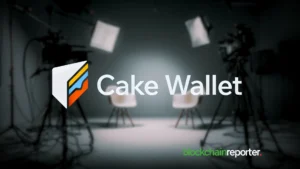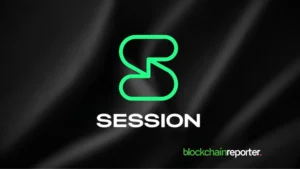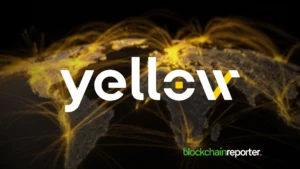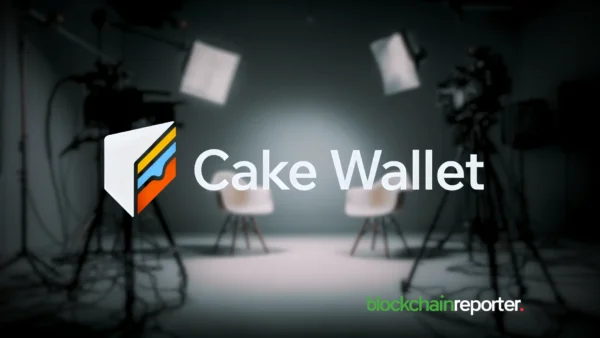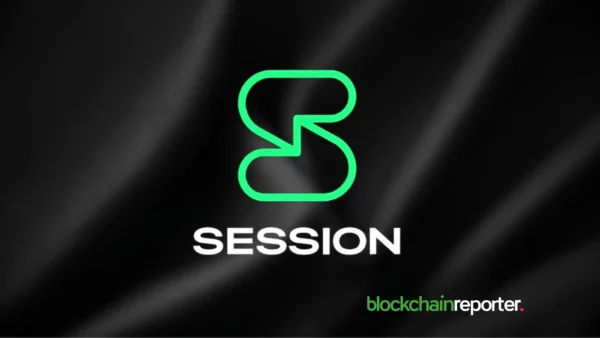
Bulla Network is setting new standards in the ever-evolving world of blockchain-based finance. With a strong focus on user privacy, decentralization, and security, Bulla Network offers an accountless and data-free platform that prioritizes the needs of individuals and businesses alike. By connecting wallet addresses directly and eliminating intermediaries, Bulla Network empowers users to have full control over their financial assets and fosters a truly peer-to-peer decentralized financial ecosystem.
BlockchainReporter had the privilege of sitting down with Michael Revy, the visionary Founder and CEO of Bulla Network. In this exclusive interview, we delve into the inspiration behind Bulla Network’s creation, as well as the innovative features that streamline financial operations for users. We’ll also discuss the revolutionary on-chain credit protocol and the game-changing Transaction Importer tool, which allows users to effortlessly manage and report on all their on-chain activities, creating a comprehensive view of their financial portfolio across multiple chains.
Furthermore, Michael Revy shares his insights on the role of Web3 in shaping the future of businesses and finance, highlighting the advantages of on-chain credit and the upcoming partnership with Huma Finance to introduce an exciting invoice factoring product. Join us as we uncover the visionary perspectives of Michael Revy and explore the groundbreaking developments that Bulla Network brings to the world of blockchain and finance.
Q.1) As the CEO of Bulla Network, could you share with us what inspired you to create an on-chain credit protocol that prioritizes user privacy and decentralization?
I was inspired to generate on-chain credit when I saw that the blockchain could facilitate bankless transactions! This is huge! And this will eventually change the way business is done because it offers cheaper and deeper finance opportunities and a more inclusive finance world.
Q.2) Can you tell us more about Bulla Network’s Transaction Importer tool and how it enhances users’ ability to manage and report on their on-chain activity?
This tool is revolutionary! It finds and imports all your transactions across 14 networks into our user-friendly dashboard. What a time and hassle-saver. Our users asked for it so they could see all their transactions (Bulla and non-Bulla, mints, swaps, payments) on their Bulla dashboard, and we delivered.
It’s a bit like creating a full bank-account view of your wallet and our users love it because it’s now so easy to keep all their on-chain activity in one place.
Q.3) How does the Transaction Importer tool simplify the process of importing and organizing on-chain transactions for users? What benefits does it offer for tax reporting and financial planning?
The tool is flexible as to what it imports. You can import up to 13 chains all at once. You can sort by chain or for payments made or payments received etc. It finds mints and swaps. It will show the various transactions within transactions for swaps. It gives you all the data you need to understand any transaction.
It comes with a timestamp and a cost for native tokens in USD. We may add other base currencies. It uses the ENS and other naming services so you do not always have to guess ‘coinbase1’ or ‘SushiSwap’ for many onboarding or known DeFi addresses. You can tag other addresses as you like.
Once imported, the data is easily exported via CSV to other accounting software. This makes running reports for taxes and financial planning so much faster and easier.
Q.4) Bulla Network emphasizes user privacy and data protection. Could you explain how the platform operates in an accountless and data-free manner, and why this approach is important for users?
Bulla remains permissionless and as close to the mantra of blockchains as possible. You can use the main features without hosting data or having some login at Bulla. We did this because we believe people should be sovereign in their business banking/credit needs.
Bulla is as private and protected as the Ethereum blockchain itself. The inputs are addresses and so they remain pseudonymous. Bulla has a contact database for ease of use, but you can use Bulla without the Bulla contact engine (which is hosted off-chain).
Q.5) Peer-to-peer decentralization is a key aspect of Bulla Network. How does the platform enable direct wallet-to-wallet transactions without the need for intermediaries? What advantages does this decentralized approach provide?
The protocol is simple but effective. Once you connect your wallet, you can create an invoice or, as we say, mint a BullaClaims NFT. Such an NFT has a creditor (usually the minter), a debtor, and an amount. When you go to Bulla.Network and open the Bulla Banker dApp, if your address is located on any BullaClaim or invoice, this token will be displayed.
Context is given to the dashboard by matching the address to either the creditor or debtor address. Creditor match = receivable, debtor match = payable. These NFTs can be marked paid or unpaid.
A BullaClaim NFT has callable functions for any debtor to reject or to pay a claim. If a Claim is paid, the NFT makes a transfer wallet to wallet as described in the NFT. If the payment is successful, the NFT is marked paid.
The huge advantage is that you and your counterparty are directly interacting. You share the same NFT. The Claims NFT can contain IPFS hashes to other documents. The ownership of the Claims NFT can also be transferred – so a creditor may easily factor an invoice. When a claim is paid, the debtor has proof of payment. The Bulla dashboard will make doing simple business simple again. Using Bulla you have complete transparency.
Q.6) Security is a significant concern when it comes to financial operations. How does Bulla Network leverage blockchain technology to ensure the security and integrity of transactions, payments, and claims?
As I said above, Bulla is as secure and pseudonymous as Ethereum itself. Security is baked into the claims token but more importantly, Bulla does not send or escrow crypto. A person using Bulla is the person telling a BullaClaim to execute. Only a wallet with the same address as a debtor is enabled to execute payment of a claim.
Furthermore, Bulla is integrated with SAFE. You can propose payments to a treasury and have your cosigners see what you want to have paid out. If there is something wrong, you can reject the claim or a series of claims.
Remember, minted claims are instantly seen by both parties too. In the case where I want to ‘contingently’ pay a person, I can mint a claims token and ‘self-indenture’ my wallet. This will arrive on my dashboard as a payable but as a receivable to my counterparty.
If my counterparty does not see the token in their dashboard (I entered the wrong address) we can remedy it with a rescind of the token and a new mint. Similarly, if my recipient sees the wrong amount, we can also remedy it. When all is correct, only then do I execute the contingent payment!
What I am driving at is that what makes Bulla more secure and safe to use is that it leverages all the security and behaviors of Ethereum. It never takes any crypto and it is transparent to those most interested in its successful use.
Q.7) What are the efficiency and cost-saving benefits that users can expect from using Bulla Network’s invoicing, payments, and payroll features? How does the platform leverage smart contracts to streamline these financial operations?
It is very inexpensive to use Bulla for all your Web3 bookkeeping and finance needs. For a large batch of payments, which can be executed almost instantly, we only charge $2 per line item, plus gas. If you compare this to the average cost of making international payments through banking channels, $50+, we are very price competitive.
Our Transaction Importer only costs $49 for the whole year. Minting an invoice or a claim has no associated Bulla fee. We may need to increase costs someday, but once the contracts and frontend are deployed, our operating costs become quite low. We will remain the most competitive.
Q.8) Bulla Network aims to create a universal financial ecosystem that transcends geographical boundaries. Could you elaborate on how the platform achieves this goal and provides financial empowerment to individuals and businesses?
As it is possible for anyone to use DeFi from anywhere, Bulla can be used to collaborate with anyone anywhere to do business. If a business is on-chain with an address, it is open and can do business in a permissionless, transparent, and inexpensive way.
Bulla will create a source of truth for credit that benefits all businesses. A blockchain of credit and contingent payments is fundamental to activating on-chain activity.
Q.9) Could you provide more details about Bulla Network’s on-chain credit protocol and how it facilitates fast and easy credit for Web3 businesses? What advantages does on-chain credit offer over traditional financing methods?
We are proud to say that we have created the rails for on-chain invoice factoring. To understand how it works, let’s say you are a consultant and you bill five different clients for your services. Any one of those clients can take their time paying invoices, usually up to 60 days.
And let’s say you want to expand your business by buying some new equipment but you don’t have the available cash because you are waiting for these payments. If you’ve been using Bulla to invoice your clients, you can now propose these invoices to Bulla Finance for factoring.
If your invoice factoring proposal is approved by Bulla Finance, the app could pay you up to $.80 on the dollar for each invoice. Later, when your client pays the invoice, you would receive a remaining portion, less Bulla’s financing fees. This process is all on-chain so it is easier, cheaper, and more transparent than TradFi transactions.
Q.10) We understand that Bulla Network has an upcoming invoice factoring product in partnership with Huma Finance. Can you tell us more about this product and how it will benefit users?
Huma is a set of contracts that govern a lending pool. Bulla claims NFTs will be an input to our first Huma-deployed lending pool. We will be calling it the Bulla Finance Lending Pool. Any Bulla claim NFT that satisfies the underwriter logic can be factored for earlier payment to its current creditor. Upon passing the underwriter criteria, Bulla Finance will pay the current creditor a factored amount – usually 80%.
The creditor address gets swapped for the Bulla Finance address. Bulla Finance waits for the debtor to pay the invoice (as the original creditor would have done) and when the debtor pays, the pool receives 100% of the invoice. Bulla Finance then pays the original creditor an amount, minus Huma and Bulla fees. A person who factors an invoice can get 80% at first, and, if the debtor pays in a timely manner, could get as much as 10 to 15% more LATER ON?
The important distinction is that the Huma deployed pool can easily accept Bulla claims NFTs. This will make the pool and all of its lending completely transparent. It is a long way from the fractured lending markets that exist. Transparency and a growing blockchain of contingent payments with their history will allow many new forms of collective on-chain banking. We imagine that many people could create their own ‘Bulla finance’ and offer lending services.
Q.11) In your opinion, how will Web3 become the biggest competitive advantage for businesses in the near future? How do you see Bulla Network contributing to this trend?
Business is about more than payments. It is about extending credit and providing financing. Bulla is providing the first primitive for a business finance blockchain. The competitive advantage will grow with the chain. The advantage is the permissionless nature of blockchains. The same value that is created for ETH or BTC will accrue to a Bulla claims blockchain.
Q.12) Lastly, is there any message you would like to convey to the Bulla Network community and those who are interested in joining the platform?
People always say, “Not your keys, not your crypto.” They mean that if you don’t have crypto in a wallet that you generated, you don’t own it. At Bulla, we take it one step further by saying, “Not your claims, not your credit.” We want people and businesses to understand their worth and mint it!
Key Takeaways
Our discussion with Michael Revy, the Founder and CEO of Bulla Network, has been nothing short of enlightening and inspiring. Through his visionary leadership, Bulla Network has emerged as a trailblazer in the realm of blockchain-based finance, offering a unique on-chain credit protocol that prioritizes user privacy and decentralization.
The Transaction Importer tool, a groundbreaking addition to Bulla Network’s suite of features, stands as a testament to the platform’s commitment to efficiency and user-centricity. Bulla Network’s emphasis on security and data protection, leveraging the power of blockchain technology, instills confidence and trust in users, paving the way for a more secure and transparent financial ecosystem.
As we explore the upcoming invoice factoring product in collaboration with Huma Finance, we glimpse the future of on-chain credit, enabling faster and more inclusive financing solutions for businesses. Bulla Network’s commitment to transparency and frictionless transactions will undoubtedly revolutionize the way businesses operate on-chain, opening up new possibilities for growth and innovation.
Through this insightful interview, we have witnessed the transformative potential of Web3, where decentralized finance and on-chain credit are reshaping traditional financial paradigms. Bulla Network is at the forefront of this revolution, bringing universal accessibility, efficiency, and cost-saving benefits to individuals and businesses across the globe.
We extend our gratitude to Michael Revy for sharing his invaluable insights and driving us toward a more secure, transparent, and empowering future in the world of finance. The team at Bulla Network is paving the way for a new era of decentralized finance, and we eagerly await the impactful developments that lie ahead.

